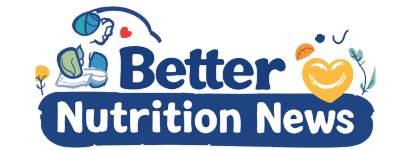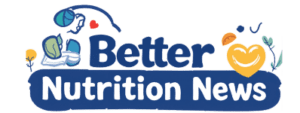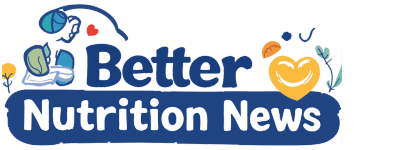In an era where chronic disease prevention, health optimization, and mindful eating have taken center stage, the ability to decode a nutrition label has become an essential skill for the health-conscious consumer. Yet despite the ubiquitous presence of nutrition facts panels on packaged foods, many people still struggle to understand the real meaning behind the numbers and terminology. The confusion is not surprising, given how layered and scientific this data can be. With research constantly evolving, it’s critical to ground our understanding in evidence-based nutrition information rather than fad-driven or oversimplified perspectives.
You may also like: Best Foods for Cognitive Function: What Science Reveals About Brain Nourishment, Focus, and Mental Clarity
This science-backed nutrition guide aims to demystify the components of food labels, clarify how nutrient information relates to metabolic health, and provide practical insights for navigating food choices with confidence. Whether you’re scanning labels for added sugars, comparing the nutritional value of breakfast cereals, or browsing a nutrition web to find a website for foods to avoid and ingredients that may trigger sensitivities, the ability to interpret food nutrition facts is foundational to informed decision-making.

Understanding the Nutrition Facts Panel: More Than Just Numbers
The nutrition facts label is designed to provide standardized, regulated information about the nutrient composition of a food product. Introduced by the U.S. Food and Drug Administration (FDA) in 1994 and revised in 2016, the panel serves as a critical tool for understanding what you’re eating. Yet many consumers overlook important components or misunderstand what the numbers really represent. Serving size, for instance, is not a recommendation but a reflection of how much people typically consume. If a package lists 200 calories per serving and contains two servings, consuming the whole package doubles your intake—a detail often missed.
Another commonly misunderstood element is % Daily Value (%DV), which helps interpret whether a food is high or low in a particular nutrient based on a 2,000-calorie daily diet. A nutrient with 5% DV is considered low, while one with 20% or more is high. This metric allows consumers to quickly gauge whether a food product contributes significantly to their daily needs or exceeds them. For individuals monitoring specific health conditions, such as hypertension or diabetes, %DV can be a powerful guide to manage sodium, added sugar, or fiber intake. Understanding this portion of the label ensures you’re not just counting calories but evaluating the full nutritional impact of what you eat.
Calories and Macronutrients: Quality Over Quantity
While calorie content is often the most eye-catching part of any nutrition facts panel, the context surrounding those calories is what truly matters. A 300-calorie portion of nuts, for instance, offers healthy fats, protein, and fiber—nutrients that promote satiety and support heart health—whereas a 300-calorie soda is essentially devoid of nutritional value. This distinction highlights the importance of looking beyond the numbers to assess the quality of the calories consumed.
Macronutrients—fats, carbohydrates, and proteins—are broken down into further subcategories on the label, providing deeper insight into food composition. Not all fats are created equal; trans fats and saturated fats are linked to increased cardiovascular risk, while unsaturated fats from sources like olive oil and avocados support anti-inflammatory pathways. Similarly, total carbohydrates include fiber, sugars, and starches, with dietary fiber offering substantial metabolic benefits such as improved glycemic control and gut health. Protein, though sometimes underemphasized, plays a crucial role in muscle repair, satiety, and immune function.
Recognizing the nutritional value of these macronutrients can help consumers make smarter choices when meal planning or grocery shopping. Whether using a nutrition web or app to log meals, or reading physical labels, focusing on nutrient density rather than sheer caloric intake fosters a more health-forward mindset.
Micronutrients: The Often-Overlooked Essentials
Vitamins and minerals appear in smaller amounts on nutrition labels, but their physiological impact is profound. Micronutrients support enzymatic reactions, immune defense, cellular repair, and energy production. Yet they are often ignored in favor of more immediately noticeable attributes like fat or sugar content. The updated nutrition facts panel now includes potassium and vitamin D—two nutrients Americans commonly underconsume—while vitamins A and C have become optional, as deficiencies are less common.
Understanding nutrient information for micronutrients means going beyond simply avoiding deficiency. For instance, getting enough magnesium, a mineral rarely listed on labels, supports glucose metabolism and may help regulate blood pressure. Iron, another vital mineral, is essential for oxygen transport and cellular energy. Recognizing these subtleties can influence which products you choose, especially if you have specific dietary needs, such as vegetarianism or pregnancy, where certain micronutrient demands are elevated.
When reviewing food nutrition facts, look for products that provide meaningful contributions to daily vitamin and mineral needs. This is especially important when assessing fortified foods, which may appear nutrient-rich on paper but require careful evaluation to ensure bioavailability and synergy with other dietary components.
The Role of Added Sugars and Artificial Sweeteners
One of the most impactful changes to the nutrition facts label was the inclusion of added sugars, distinct from naturally occurring sugars found in fruits and dairy. Added sugars are linked to numerous health issues, including type 2 diabetes, cardiovascular disease, and obesity. By listing them separately, the label empowers consumers to reduce intake without unnecessarily avoiding whole, nutrient-dense foods like fruit.
Artificial sweeteners present a separate set of considerations. While they may reduce caloric intake and have a lower glycemic impact, their long-term health effects remain under investigation. Some studies suggest that certain non-nutritive sweeteners may alter gut microbiota or influence appetite regulation. When using a website for foods to avoid and ingredients to limit, it’s helpful to scrutinize labels for artificial sweeteners like sucralose or aspartame, especially if you’re monitoring metabolic health or digestive comfort.
Ultimately, understanding sugar content means evaluating not just the grams listed, but the broader context of the food. Is it a minimally processed yogurt with some added honey, or a highly refined snack with multiple forms of sugar? The source and structure of the sugars matter, and thoughtful label reading helps distinguish between nourishing and detrimental options.
Decoding Ingredient Lists: The Story Behind the Food
Beyond the nutrition facts panel lies the ingredient list, a window into the real composition of your food. Ingredients are listed in descending order by weight, which means the first few items make up the majority of the product. If sugar, enriched flour, or hydrogenated oils dominate the top of the list, the food likely offers low nutritional value, even if the calorie count appears modest.
Ingredient lists also help identify additives, preservatives, and allergens. For individuals sensitive to gluten, dairy, or specific emulsifiers, ingredient transparency is non-negotiable. A well-organized nutrition guide will not only emphasize macronutrient ratios but also educate readers on how to interpret ingredient quality, processing level, and potential red flags.
Websites for foods to avoid and ingredients to limit often provide searchable databases of food products and ingredient profiles, helping consumers make safer, more informed choices. However, even the best nutrition web cannot replace the importance of label literacy. By practicing critical evaluation, consumers can gain autonomy over their dietary patterns rather than relying solely on ratings or generalized advice.
Food Labels and Health Claims: Reading Between the Lines
Marketing language on food packaging—phrases like “all natural,” “high in protein,” or “immune-boosting”—can be misleading if not cross-checked against actual nutrition information. The FDA regulates specific health claims, but many descriptive terms are loosely defined and used to sway consumer perception. Understanding these distinctions is essential for discerning meaningful nutritional value from empty buzzwords.
For instance, a granola bar labeled “low fat” might be high in sugar, while a product touted as “gluten-free” could lack fiber and protein. Functional foods that promote gut health, brain performance, or energy must be backed by clinical evidence to justify such claims. A nutrition facts label provides the hard data necessary to validate or debunk these assertions.
When encountering a health claim, it’s useful to turn the package over and ask: Does the nutrition info align with the promise on the front? Does the ingredient list support the intended benefit? These simple but strategic questions help you become a more empowered consumer.
Navigating the Digital Landscape: Using a Nutrition Web Wisely
The proliferation of online nutrition resources has opened new possibilities for health education and food tracking. Whether searching for food nutrition facts, comparing products, or seeking out a reliable website for foods to avoid and ingredients to monitor, the digital ecosystem can be a helpful ally—when used wisely.
Many apps and websites provide detailed nutrition information, nutrient breakdowns, and barcode scanning features that streamline meal planning. However, not all sources are created equal. It’s important to verify that the nutrition web or database you’re consulting uses scientifically accurate, peer-reviewed data. Some platforms also include user-generated content that may not meet the same standards as professional databases.
When using these tools, prioritize those that allow you to view both the nutrition facts and full ingredient lists, and that flag allergens or dietary considerations relevant to your health status. Cross-referencing between a digital nutrition guide and on-label information fosters greater accuracy and confidence in your choices.
Applying Nutrition Knowledge in Real-World Scenarios
Understanding food labels and nutrient information is only useful if applied in everyday contexts. This means practicing skills like comparing similar products to find the option with the highest nutritional value, planning meals around whole foods, and using nutrition info to meet specific health goals.
For example, someone managing prediabetes might use the nutrition facts panel to limit added sugars and monitor carbohydrate intake, while someone training for a marathon might prioritize complex carbs and protein for recovery. Parents shopping for school lunches can scan labels to ensure adequate fiber, calcium, and iron in kids’ meals. In each scenario, the label becomes a functional tool rather than a background detail.
Over time, developing fluency in reading and interpreting nutrition facts leads to intuitive, mindful eating. What begins as a deliberate process evolves into a seamless habit of choosing foods that nourish and energize, without falling prey to marketing gimmicks or misinformation.

Frequently Asked Questions (FAQ): Advanced Insights on Nutrition and Food Awareness
1. How can I critically evaluate the accuracy of nutrition information found online?
To critically evaluate nutrition information, start by cross-referencing claims with data from peer-reviewed scientific journals or official health agencies like the NIH or FDA. Many commercial sites promote popular diets without disclosing conflicts of interest, so always prioritize sources with transparent credentials. A trustworthy nutrition guide should include evidence-based recommendations, not anecdotal success stories. If you’re using a nutrition web platform, look for citations and expert-reviewed content—sites ending in .gov or .edu often provide the most reliable nutrient information. Finally, comparing nutrition facts across multiple reputable databases helps filter out biased or misleading claims.
2. What role does psychology play in how we interpret food nutrition facts?
Psychology significantly shapes how we interpret food nutrition facts, especially through concepts like cognitive bias and emotional association. People often underestimate calorie counts in foods labeled as “organic” or “low-fat,” despite having similar nutritional value of their regular counterparts. This bias can skew our understanding of nutrition info and lead to poor dietary decisions. Additionally, individuals under stress or emotional duress may disregard nutrition information entirely in favor of comfort foods. Educating people using a practical nutrition guide that includes behavioral strategies can help rewire these cognitive distortions and promote more informed choices.
3. Are there emerging technologies that enhance how we access nutrient information?
Yes, advancements in artificial intelligence and machine learning are revolutionizing how we access nutrient information. AI-based food scanners can now assess the nutritional value of meals in real time by analyzing images, a significant improvement over manual tracking. Additionally, mobile apps integrated with comprehensive nutrition web databases can provide personalized nutrition info based on genetic and metabolic profiling. These tools go beyond generic nutrition facts to offer dynamic updates tailored to your health goals. As a result, you no longer have to rely solely on static labels or outdated nutrition information—the tech does the work for you.
4. How can I use food labeling laws to better understand nutritional value?
Understanding food labeling laws allows consumers to decode the nutrition facts more accurately. In the U.S., manufacturers are required to list calories, macronutrients, and certain micronutrients per serving, which helps estimate the nutritional value of the product. However, being aware of labeling loopholes—such as rounding down trans fats to zero—enhances your grasp of nutrition info. A reliable nutrition guide will explain how serving sizes can distort perceptions of healthfulness. Using a website for foods to avoid and ingredients can help clarify ingredient lists, particularly for additives that may not be well-explained on packaging.
5. What is the significance of bioavailability when interpreting nutrition facts?
Bioavailability refers to how well your body absorbs and uses a given nutrient, which often diverges from what’s listed in the nutrition facts. For example, the nutritional value of spinach includes iron, but much of it is bound to oxalates, making absorption less efficient. This nuance is often missed in static nutrition information panels. Advanced nutrition web platforms sometimes include bioavailability indexes to provide more accurate nutrient information. When evaluating nutrition info, understanding this distinction can help you prioritize whole food sources with higher biological utility rather than just focusing on label numbers.
6. How can social and cultural factors affect our interpretation of nutrition information?
Cultural and social influences greatly impact how people perceive nutrition information. In some cultures, high-fat or high-sugar foods are seen as celebratory or traditional, making them exempt from scrutiny regardless of their food nutrition facts. A comprehensive nutrition guide must therefore be culturally sensitive, addressing not only what to eat but how social norms influence those choices. Moreover, access to a website for foods to avoid and ingredients in multiple languages can help broaden awareness across communities. Even when nutrition info is available, the willingness to apply it often depends on deeply rooted beliefs and communal practices.
7. Are there personalized nutrition tools that go beyond general food nutrition facts?
Absolutely. Personalized nutrition platforms use individual data—such as microbiome analysis, genetic makeup, and health history—to refine general nutrition facts into actionable insights. These systems offer a deeper understanding of the nutritional value of each food as it relates specifically to you, rather than the average person. When paired with a high-quality nutrition web service, these platforms provide dynamic nutrient information that evolves with your lifestyle. They also integrate with nutrition guide apps to make real-time recommendations. Such tailored nutrition info empowers people to make decisions that better support long-term health outcomes.
8. What are some underutilized but powerful sources of nutrient information?
Fermented foods, sprouted grains, and wild herbs often get overlooked despite offering exceptional nutritional value of key vitamins and minerals. These are not always included in mainstream nutrition info databases but may appear in specialized nutrition web platforms or research-focused nutrition guide repositories. Additionally, academic journals and agriculture department bulletins can offer deeper nutrition information on regionally sourced or indigenous foods. Leveraging a trustworthy website for foods to avoid and ingredients can also reveal hidden additives that reduce a food’s nutrient density. This helps go beyond superficial food nutrition facts into more holistic understanding.
9. How can parents use nutrient information to combat childhood obesity?
Parents can play a pivotal role by actively teaching children how to interpret nutrition facts and make healthier choices. Using age-appropriate nutrition guides that gamify the learning process can increase engagement. Beyond label reading, parents should also involve kids in browsing a nutrition web resource or using a website for foods to avoid and ingredients to demystify hidden sugars and unhealthy additives. Reframing discussions around the nutritional value of foods—focusing on energy, play, and growth rather than weight—can also foster positive associations. Ultimately, the earlier children internalize quality nutrition info, the more likely they are to develop lifelong healthy habits.
10. What future developments could transform how we understand food nutrition facts?
Looking ahead, blockchain technology could be used to authenticate nutrition information from farm to table, reducing misinformation and food fraud. Augmented reality apps might let consumers scan a product and instantly visualize its nutritional value of versus their personal health metrics. Enhanced nutrition web interfaces could incorporate real-time data from wearables to update your daily nutrient information needs on the fly. Even now, some startups are integrating food nutrition facts into virtual grocery carts to flag dietary red flags automatically. These innovations, combined with a personalized nutrition guide and access to a website for foods to avoid and ingredients, are poised to reshape the food landscape entirely.

Final Thoughts: Transforming Labels Into Tools for Better Health
The journey to better nutrition starts not with radical diets or trendy ingredients, but with a clear-eyed understanding of what we put into our bodies every day. Nutrition facts and nutrient information, when interpreted through a scientific lens, offer a roadmap to informed, empowered choices. They reveal not just what is in our food, but how it interacts with our physiology, our lifestyle, and our long-term goals.
By developing fluency in reading labels, understanding macronutrient and micronutrient balance, and utilizing digital tools with discernment, consumers can transform food shopping into an act of self-care. Whether you are browsing a nutrition web, using a nutrition guide for meal planning, or exploring the nutritional value of a new snack, the key lies in intentionality and curiosity.
Ultimately, nutrition facts are not just numbers—they are insights into the architecture of wellness. With science as your compass, every label becomes an opportunity to choose health, clarity, and vitality in an increasingly complex food landscape.
food label literacy, reading food packages, daily nutrient goals, evidence-based eating, how to understand nutrition labels, functional foods and health, dietitian tips for food shopping, nutrient-rich snacks, clean eating science, label reading for metabolic health, smart food choices, whole food benefits, heart health nutrition, insulin sensitivity and diet, mindful grocery shopping, decoding processed foods, nutrition for chronic conditions, evaluating sugar intake, healthy macronutrient balance, personalized nutrition strategies
Further Reading:
How to Understand and Use the Nutrition Facts Label
Nutrition Facts: who is using them, what are they using, and how does it relate to dietary intake?
Disclaimer: The content published on Better Nutrition News (https://betternutritionnews.com) is for informational and educational purposes only. It is not intended as a substitute for professional medical advice, diagnosis, or treatment. Always seek the guidance of a qualified healthcare professional before making any changes to your diet, nutrition, or wellness practices. The opinions expressed by authors and contributors are their own and do not necessarily reflect those of Better Nutrition News.
Better Nutrition News and its affiliates make no representations or warranties regarding the accuracy, completeness, or reliability of the information provided. We disclaim all liability for any loss, injury, or damage resulting from the use or reliance on the content published on this site. External links are provided for reference purposes only and do not imply endorsement.



